Are you looking to secure a lease for your plant and machinery but unsure where to start? Crafting the perfect lease agreement can be a daunting task, yet it's essential for protecting both parties involved. In this article, we'll guide you through the key elements of a plant and machinery lease agreement, ensuring you understand your rights and obligations. So, let's dive in and explore how to create a comprehensive lease that works for everyone!
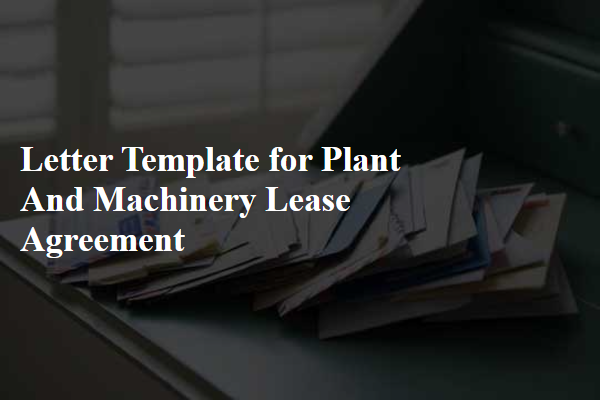
Parties Involved
In a plant and machinery lease agreement, the parties involved typically include the lessor, such as a machinery rental company or equipment manufacturer, and the lessee, an individual or business seeking to rent equipment for operational purposes. The lessor provides the machinery, which can range from heavy equipment like bulldozers and excavators to specialized items such as cranes and forklifts, while the lessee is responsible for utilizing the equipment for specific projects or tasks, often detailed in the lease terms. The agreement specifies key details such as lease duration, payment terms, maintenance responsibilities, and liability clauses, ensuring both parties understand their obligations. Additionally, the location of the equipment's usage, like construction sites in urban areas or agricultural fields, can also influence the terms of the lease, including insurance requirements and compliance with local regulations.
Description of Plant and Machinery
The lease agreement encompasses various types of plant and machinery, including a Caterpillar 320 Excavator (Model year 2021, Hourly use under 2000 hours) and a JCB 3CX Backhoe Loader (Model year 2020, featuring a digging depth of 5.3 meters). Additional equipment includes a Komatsu GD655-5 Motor Grader (Operating weight of 14,000 kg) designed for efficient road maintenance tasks, and a Doosan DL280-5 Wheel Loader (Payload capacity of 2,700 kg) optimized for material handling. All equipment undergoes regular maintenance checks every six months, ensuring operational efficiency and safety compliance, with certifications documented under ISO 9001 standards. This comprehensive listing facilitates clarity on the scope of the leased machinery, contributing to project efficiency and effectiveness.
Term and Renewal Provisions
The term of the plant and machinery lease agreement is defined as an initial duration of 36 months, commencing on January 1, 2024, and set to expire on December 31, 2026. An optional renewal provision allows the lessee to extend the lease for an additional 24 months under the same terms and conditions, provided that a written notice of intent to renew is delivered to the lessor at least 60 days before the expiration of the initial lease term. If the lessee fails to provide such notice, the lease will terminate upon the end of the initial term. Additionally, any adjustments to rental rates for the renewal period will be based on the Consumer Price Index (CPI) changes recorded by the Bureau of Labor Statistics within the preceding year. All terms and conditions must be mutually agreed upon in writing prior to the renewal.
Lease Payment and Payment Schedule
The lease payment for the plant and machinery, specifically the high-capacity excavator and the industrial-grade welding machine, is set at $5,000 monthly, with an annual increase of 3%. Payments are due on the first day of each month, starting from January 1, 2024. The lease term spans 36 months, concluding on December 31, 2026. A security deposit of $15,000 is required prior to the start of the lease, covering potential damages or unpaid dues. Late payments incur a fee of 5% of the overdue amount after a grace period of ten days. Additional maintenance costs, anticipated at approximately $500 quarterly, remain the lessee's responsibility, ensuring optimal equipment performance throughout the lease duration.
Maintenance and Repairs Responsibility
In a plant and machinery lease agreement, maintenance and repairs responsibility is a critical aspect that defines the obligations of both the lessor (the owner of the equipment) and the lessee (the party leasing the equipment). Clear stipulations regarding routine maintenance (scheduled inspections, lubrication, and cleaning) ensure optimal performance and prolong equipment lifespan. On the other hand, provisions concerning repairs (fixing malfunctioning parts or replacing damaged components) delineate who bears the costs and responsibilities, often stipulating that the lessee handles minor repairs while the lessor is responsible for major repairs due to wear and tear. This section often references industry standards for maintenance protocols and outlines the timelines for conducting such maintenance to prevent operational downtimes. Additionally, the mention of consequences for failure to adhere to maintenance schedules, such as penalties or termination of the lease, emphasizes the importance of compliance in preserving equipment integrity, crucial for sectors reliant on operational efficiency, such as construction and manufacturing.
Letter Template For Plant And Machinery Lease Agreement Samples
Letter template of plant and machinery lease agreement for industrial purposes
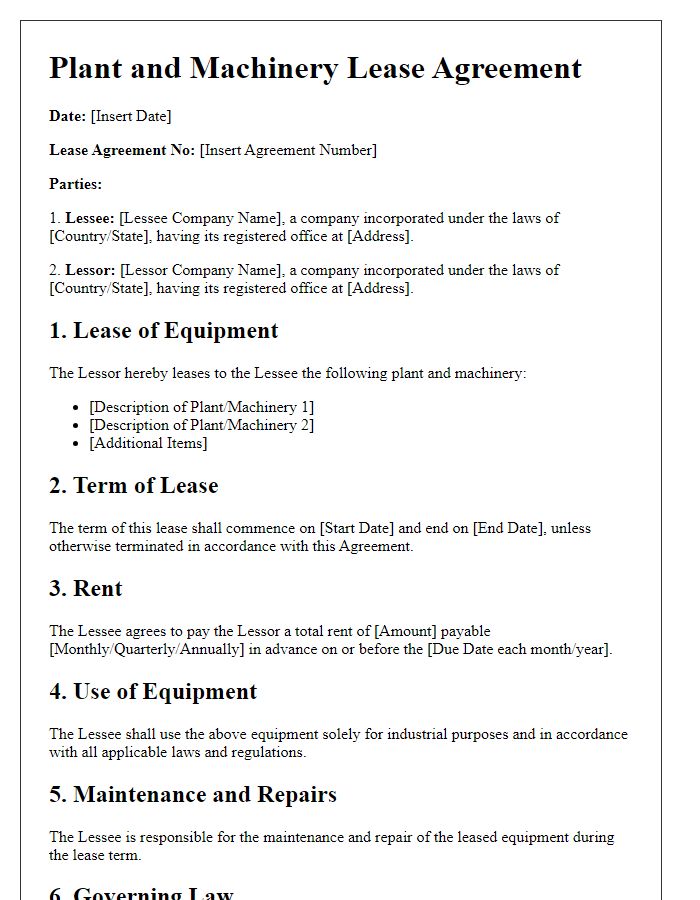
Letter template of plant and machinery lease agreement for construction projects
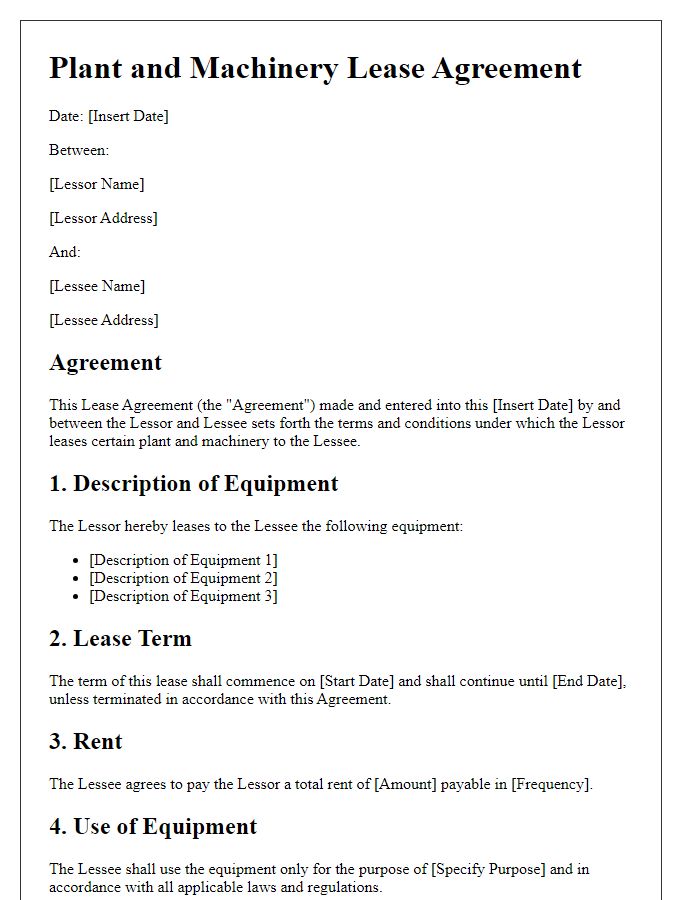
Letter template of plant and machinery lease agreement for agricultural equipment
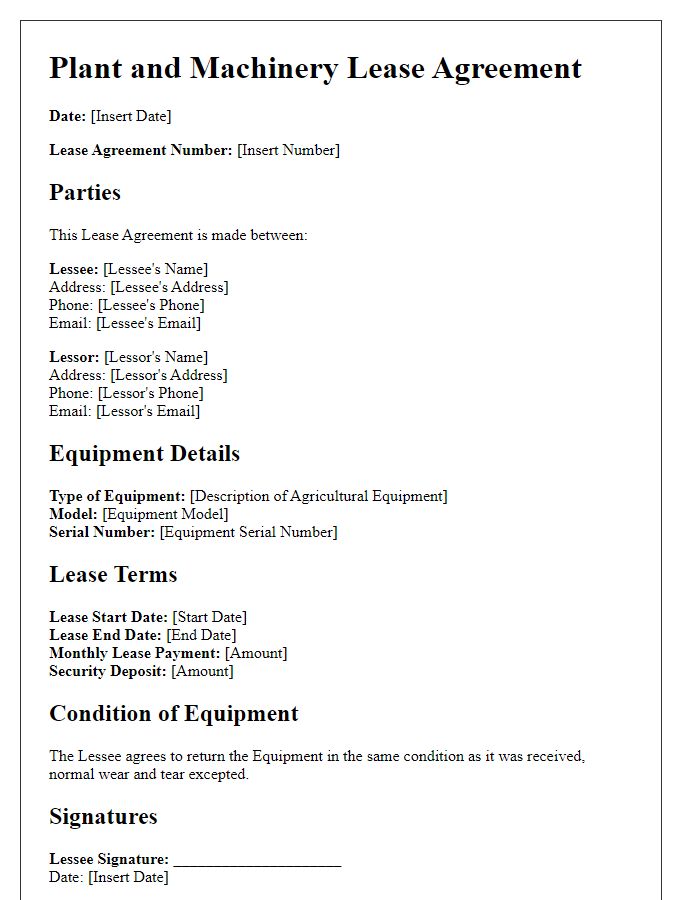
Letter template of plant and machinery lease agreement for short-term rentals
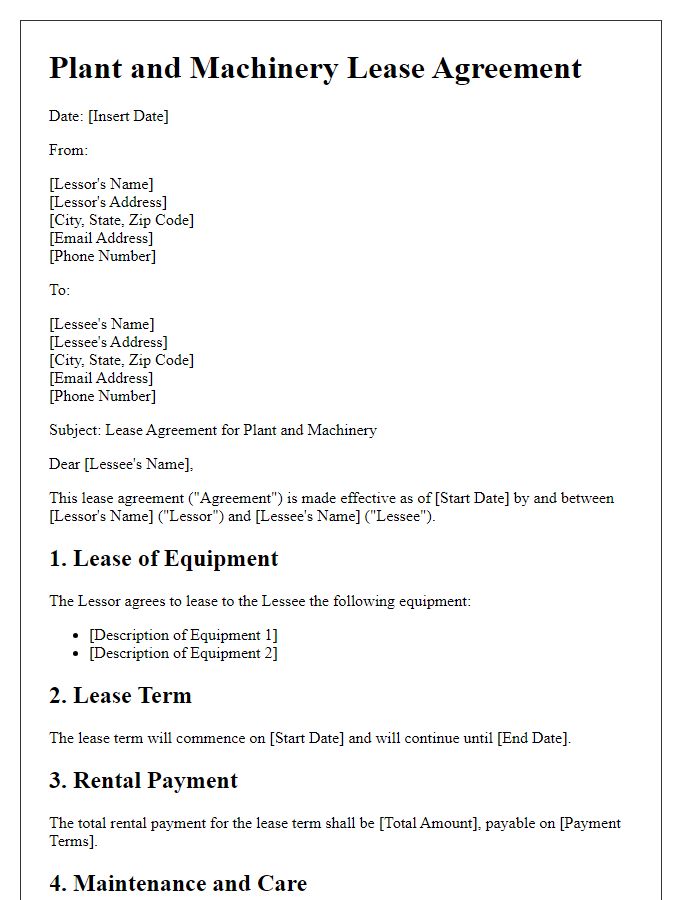
Letter template of plant and machinery lease agreement for long-term leasing
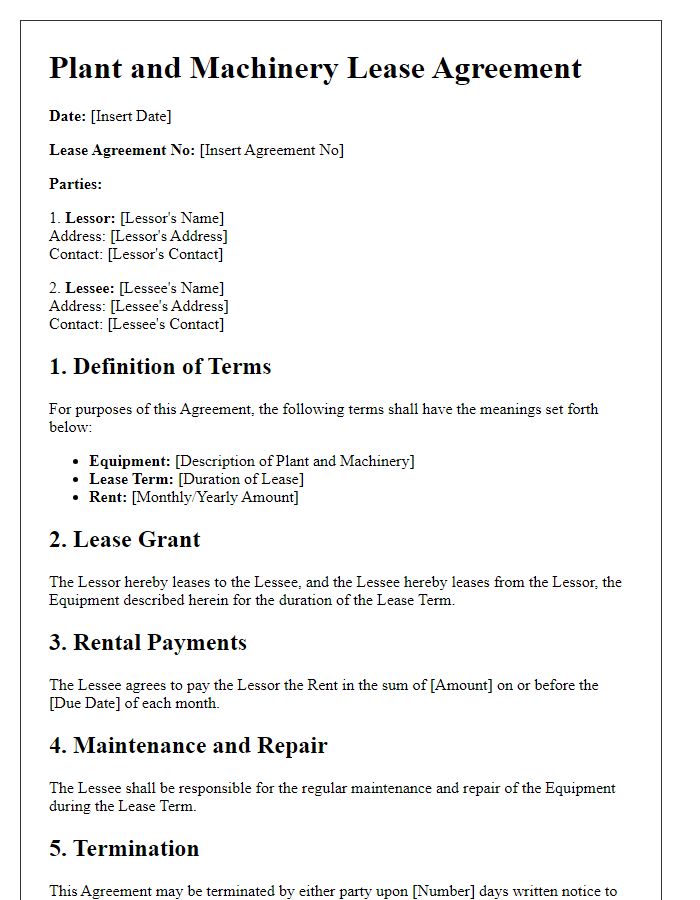
Letter template of plant and machinery lease agreement for commercial use
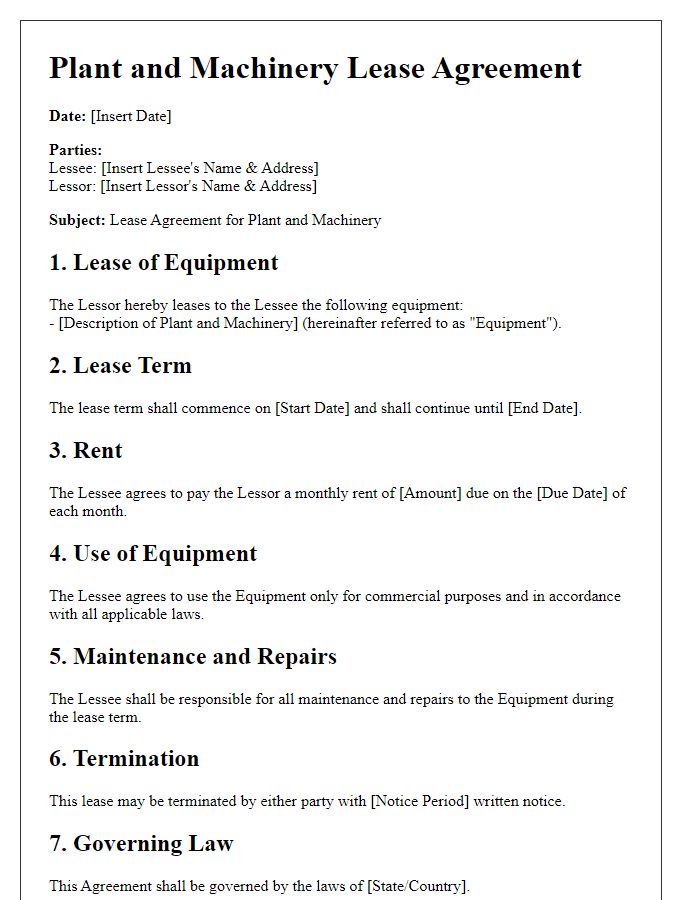
Letter template of plant and machinery lease agreement for service providers
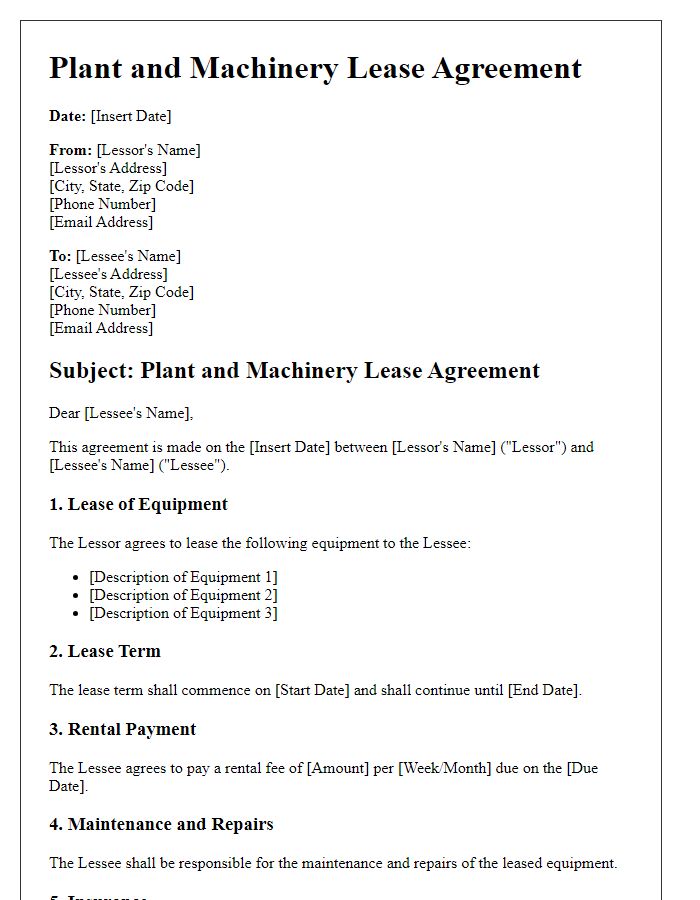
Letter template of plant and machinery lease agreement for equipment financing
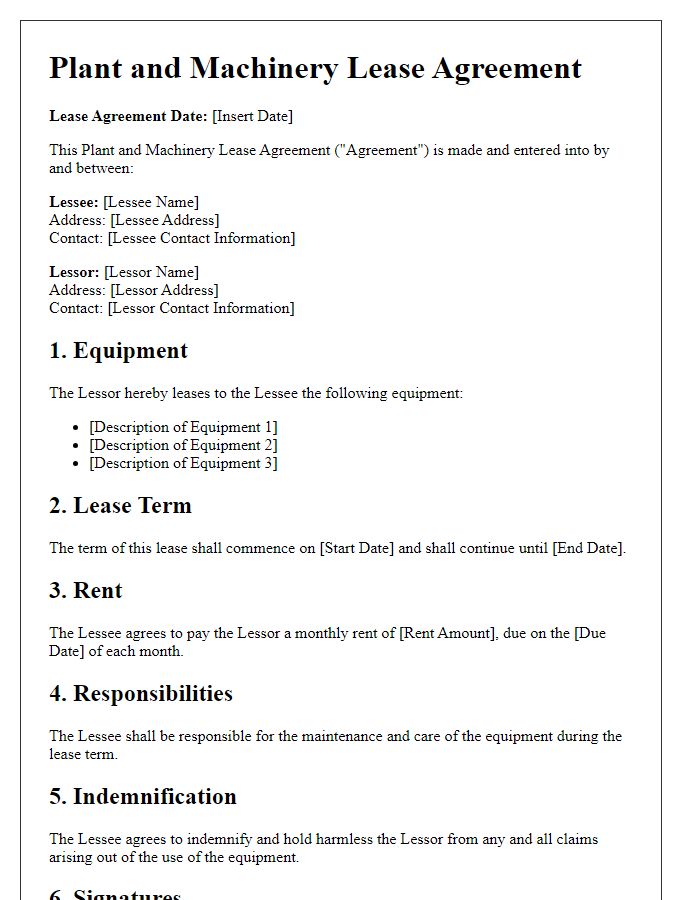

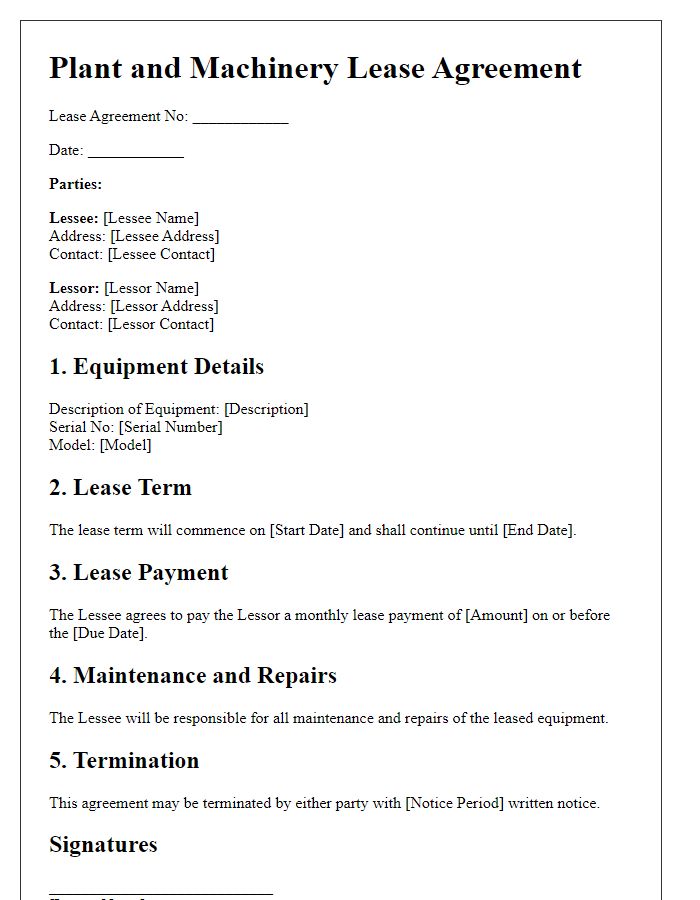
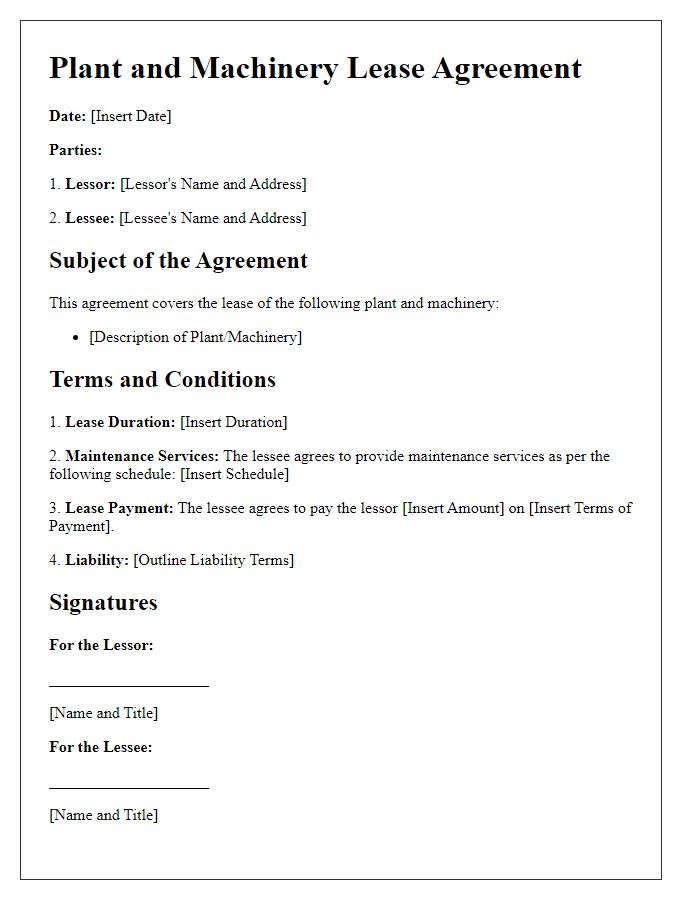

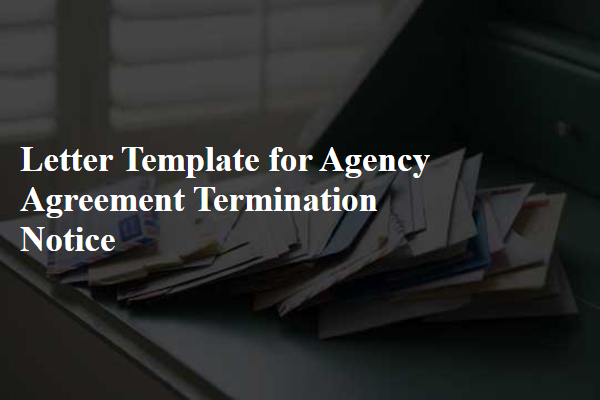
Comments